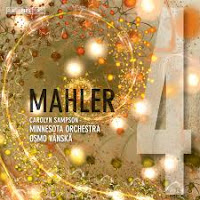I'm reviewing here two collections of symphonies, the first a set of String Symphonies composed by Felix Mendelssohn, begun by him at the age of eleven, and five symphonies of Camille Saint-Saëns, the 'French Mendelssohn', the first numbered symphony of Saint-Saëns begun at the age of fifteen.
Felix Mendelssohn Bartholdy, The Complete String Symphonies, also includes Concerto for Violin and Strings in D Minor, Münchner Rundfunkorchester, c. Henry Raudales, 3 CDs, BR Klassik
There are twelve symphonies in this set and listening through them reveals the composer's self-development beginning with C.P.E. Bach, then, in No. 4, comes an experiment with the French overture, developing on further as the composer's skills and knowledge widenened, until come works with the four movements of the classical symphony. The later numbers all have their own form, such as No. 12, with its initial fugue and an expansive final movement. All are a joy! The Mendelssohn family dining-room concerts revived a tradition of 'house music', not only for amateur guests but, increasingly professional players who took part in this intimate setting. It's a mistake to binge on these symphonies - my recommendation is for listening to just one or two at a time to imbibe their full musical flavours.
Saint-Saëns, Complete Symphonies, Malmö Symphony Orchestra, c. Marc Soustrot, 3 CDs also includes Le rouet d'Omphale, Op. 31, La jeunesse d'Hercule, Op. 50 & Danse macabre, Op. 40, Naxos
The label of 'French Mendelssohn' implies a light and inventive touch, clear in these works from the word go. Only the composer's 'Organ Symphony' (No. 3), is well known, the others should be equally so. Two of the five symphonies have no catalogue number, but this certainly does not make them any the lesser. The Symphony in F Major was a prize-winning competition entry with a wonderful final movement of theme and variations. The symphony in A Major is the first, dated 1850 and is a tribute to Mozart. If you wish Mozart had given us more beyond his final 'Jupiter' symphony, let this satisfy your appetite.


















